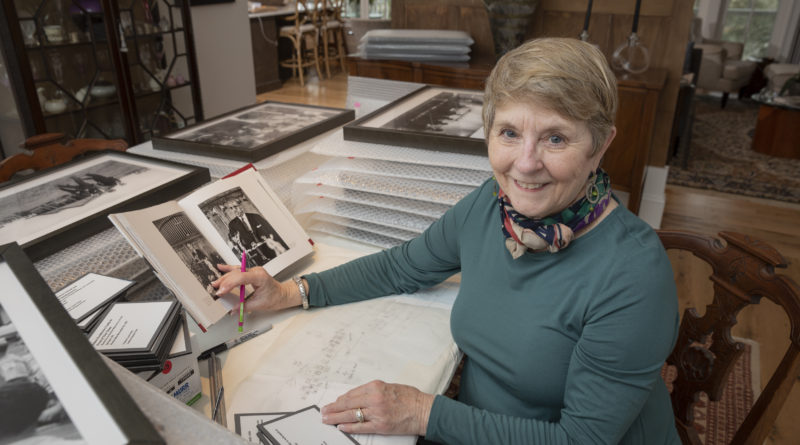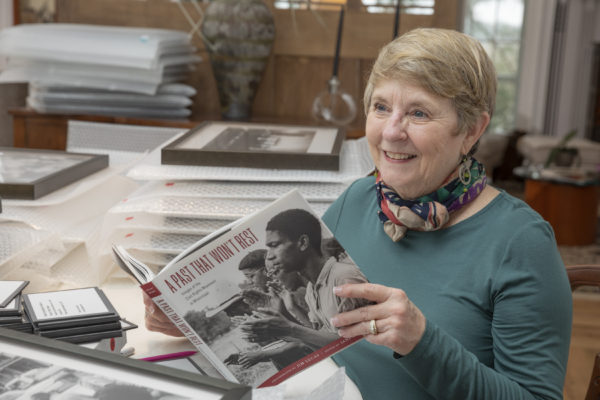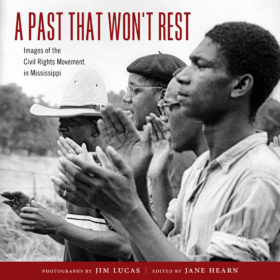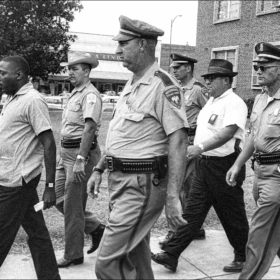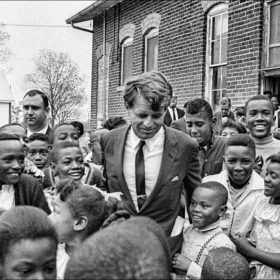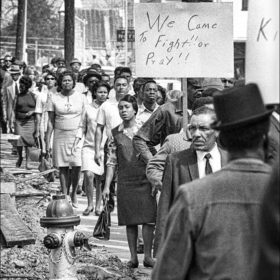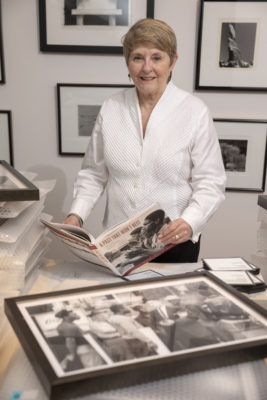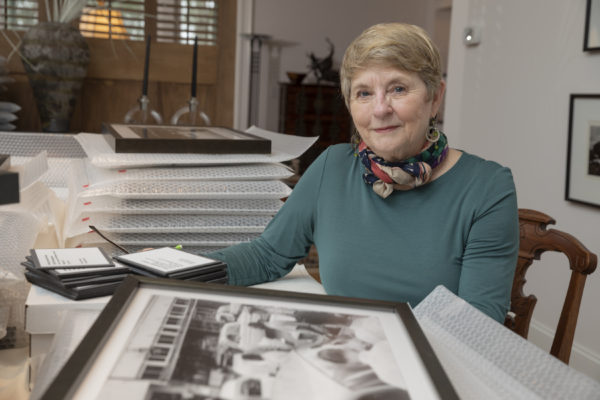Jane Hearn Presents A Civil Rights Movement Exhibition At USCB
Jane Hearn Presents A Civil Rights Movement Exhibition At USCB: A Past That Won’t Rest - Photographs By Jim Lucas
story by CAROL LAUVRAY photographed by PAUL NURNBERG
The Roots of Civil Rights
Beaufort is where 10,000 slaves were freed when Abraham Lincoln’s Emancipation Proclamation was first read on January 1, 1863 at Camp Saxton, while the Civil War continued to rage. It is where the Reconstruction Era was born as these newly freed men, women and children embraced their civil rights for the first time. And it’s where, a century later, Dr. Martin Luther King, Jr. met at Penn Center with other organizers to plan a strategy for the civil rights movement. Beaufort is where African Americans’ quest to attain equal rights began—a story that is still unfolding throughout our nation.
During the 1960s, Mississippi was at the center of the civil rights story and struggle in the Jim Crow South. The Civil Rights Act of 1964 was in Congress that summer, as civil rights activists in Mississippi were planning voter registration drives. In June 1964, film crews arrived in Meridian and Philadelphia, Mississippi to cover the search for three civil rights workers—Michael Schwerner and Andrew Goodman, two white Jewish men from New York, and James Chaney, a black man from Meridian, MS—who had disappeared together on June 21, after Neshoba County, MS Deputy Sheriff Cecil Price had arrested the activists.
At the Right Place, At the Right Time: Jim Lucas and His Camera
During 1964’s Freedom Summer, Jim Lucas, a student at Millsaps College in Jackson, MS and an aspiring photojournalist, was at the right place at the right time to record history with his camera. On summer break from college, Lucas was hired as a runner to do errands by the CBS film crews that came to Mississippi to cover the search for the three missing civil rights activists. While working for the CBS crews, Lucas documented the events as they happened with his still camera. Following a massive manhunt for the three activists ordered by the federal government, their bodies were found beneath a rural dam 44 days after they had disappeared. Jim Lucas was there to capture the dramatic scene in photographs as the bodies arrived at the University of Mississippi Medical Center in Jackson on August 4 to undergo autopsies.
Jim Lucas’ powerful images chronicling historic civil rights events that took place in Mississippi from 1964 – 1968, including local marches, pickets, planning meetings and bombings, are featured in a photographic exhibition, A Past That Won’t Rest: Images of the Civil Rights Movement in Mississippi. The exhibition, presented by Beaufort resident Jane Hearn, will be on display at the University of South Carolina Beaufort (USCB) Center for the Arts Gallery from February 26 through March 17, 2019. Ms. Hearn was Jim Lucas’ wife at the time of his death in a car accident in 1980.
Documenting Civil Rights History
Three years after Lucas’ death, Jane Hearn met her current husband, Terry Stone, in Jackson, MS. While traveling, the couple came across Bull Point and visited Beaufort. “Just like everyone else, we fell in love with Beaufort,” she said. They moved to Beaufort in 2007. During the process of moving from Mississippi, Jane said she was going through a storage cabinet containing her late husband’s collection of photographic negatives, contact sheets, prints and slides and she was conflicted about what to do with them. “I asked myself, ‘do I leave all of this with the Mississippi Department of Archives and History, or should I do something with it?’”
She continued, “It became obvious to me that I needed to organize the collection into a presentation that could be seen by a larger audience. I thought it important that Jim’s work, as well as his contribution as a civil rights era photographer, be included in the photographic history of the Movement. Not only did Jim have the wisdom to understand that he was in an historic moment in Mississippi, but he had a gift for telling a visual story, an instinctive eye for framing his shots, and a keen human sensibility as a photojournalist. A book titled, A Past That Won’t Rest: Images of the Civil Rights Movement in Mississippi, evolved from the website of Jim’s photos that I created. I then developed and licensed the exhibit of the same name. The book includes 108 of Jim’s black and white photographs documenting civil rights events in Mississippi from 1964 – 1968. The exhibit features 50 images from the book.”
Jane says that she was able to preserve and archive her late husband’s photographs with the assistance of Red Morgan, a professional photojournalist. “Jim kept such good records and documentation about the photos he took. When Red saw Jim’s photos, he was rather impressed by Jim’s craftsmanship and technical ability as a photographer. Red and I were working with Jim’s vintage negatives, which required restoration. We digitized the photos and Red did an amazing job of restoring them; we worked together on the editing. We began the project in 2012 and we’re still working on it—there are over 5,000 images in the civil rights part of Jim’s photographic collection,” she explained.
The book A Past That Won’t Rest, published by the University Press of Mississippi, is organized into five chapters, each representing iconic events of the civil rights movement in Mississippi: 1) the search for the three missing civil rights workers in Neshoba County during Freedom Summer in 1964; 2) the Meredith March Against Fear in 1966; 3) the murder of Wharlest Jackson by the Ku Klux Klan in Natchez in 1967; 4) the US Senate Hearings on Poverty and Senator Robert F. Kennedy’s visit to the Mississippi Delta in 1967; and 5) a chapter featuring dramatic photos documenting the Ku Klux Klan’s bombings of a synagogue and the homes of a rabbi and a Jewish family, along with civil rights boycotts, marches and meetings held in Jackson, MS from 1966 – 1968. The book includes essays written by seven experts, framing the history and context of the civil rights era. It is available for purchase at Nevermore Books, 702 Craven Street, or through the University Press of Mississippi.
Ms. Hearn curated the traveling photographic exhibition A Past That Won’t Rest, which premiered at the 50th anniversary of Freedom Summer held by the Veterans of the Civil Rights Movement in Mississippi at Tougaloo College. Afterward, the exhibition traveled to the National Civil Rights Museum in Memphis, TN and to the Brown v. Board of Education Historic Site in Topeka, KS, before coming to the USCB Center for the Arts Gallery in Beaufort.
A Story Still Unfolding Throughout Our Nation
When Jane Hearn was asked to share her favorite photos taken by her late husband Jim Lucas depicting the civil rights struggle in Mississippi, she explained, “The photo of a civil rights march on the cover of the book A Past That Won’t Rest is one of my favorites. That could be any march—marches and protests were universal to the civil rights movement in the 1960s. They were about people gathering the courage, even in the face of danger, to overcome oppressive Jim Crow laws for the first time. Another of my favorites is the photo of Robert Kennedy walking away from a sharecropper’s house and the sense you get of how overwhelmed he was with the poverty he had just seen. Jim’s photos are 50 years old now, but the topics of educational and economic oppression, voter suppression, racism and poverty are still issues that need to be solved.”

